- Administrator
- Albums and Singles
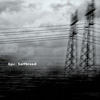 On his debut, this one-man electronic project from Norway seems to be wearing his influences on his sleeve and I would say he's coming from a similar background as me. Throughout this release there are a lot of elements pretty consistent with mid to late 1980s industrial, along with some more techno and electronic inspired rhythms. Rather than feeling overly nostalgic or dated though, these tracks filter the classic elements through a more modernized lens.
On his debut, this one-man electronic project from Norway seems to be wearing his influences on his sleeve and I would say he's coming from a similar background as me. Throughout this release there are a lot of elements pretty consistent with mid to late 1980s industrial, along with some more techno and electronic inspired rhythms. Rather than feeling overly nostalgic or dated though, these tracks filter the classic elements through a more modernized lens.
"Dissociate" is an early and clear indicator of what will be coming up. An ambient/abstract electronic collage is mixed with a straight ahead drum machine rhythm and distorted bass elements. While the beat stays constant, the other electronic elements are constantly shifting and changing, making for an extremely dynamic mix. More blatant is "Machine", with its modern-day industrial bass synth and noisy drums, with added skittering percussion and eventually a segue into full on hardcore techno.
The rhythms and bass lines throughout the album channel the likes of late 1980s Skinny Puppy or Front Line Assembly. Not blatantly stealing at all, instead it feels more like long standing influence or appreciation. The drum and bass rhythms that make up "Empty Eyes" and "Run" are a different element entirely, bringing up later period Techno Animal and Scorn in terms of grimy distorted beats, the former’s gentle string samples are a stark contrast, and the latter’s heavy synths and noise glitches make for a darker journey all together.
Another classic element pops up on more than a few tracks as well, the dialog sample. The aforementioned "Empty Eyes" opens with them, and the beat-less "Sleepwalker" throws pulsing synths over recordings of Jim Jones during the Jonestown suicides. That’s the only track where they are the focus, other than that they are simply another element to the mix that never detract, but aren’t necessarily adding much to the songs.
Tracks such as "Tranquilliser" are not as easily pigeonhole, adding dubby beats and bass elements to the vocal samples and buzzing bass synth that feels along the lines of modern industrial music, but really goes in its own direction entirely. Also, "Fond Memories" features underlying vinyl noise with gentile chiming keyboards that really have the feel of the title, a sense of warm nostalgia among the darker, raw surrounding tracks.
This is a tricky album overall, because there isn’t a great deal of innovation here, but instead makes for an interesting amalgam of other styles that come together here in a different way. It’s very well done and will surely interest anyone with a similar listening history such as myself, but it’s not entirely "new" feeling either.
samples:
Read More
- Administrator
- Albums and Singles
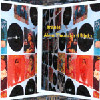 His third full length release this year, this disc compliments the odd electronic elements of Koryak Mistress Stakes Golden Sky and the Tibetan chanting of Samadhi by focing more on the stringed instruments and less on the effects or electronic stuff, though it is still there. It is a bit of a scatter-shot approach, but here it works, mixing a variety of elements, electronic and acoustic, into an absurdly brilliant mix of styles.
His third full length release this year, this disc compliments the odd electronic elements of Koryak Mistress Stakes Golden Sky and the Tibetan chanting of Samadhi by focing more on the stringed instruments and less on the effects or electronic stuff, though it is still there. It is a bit of a scatter-shot approach, but here it works, mixing a variety of elements, electronic and acoustic, into an absurdly brilliant mix of styles.
There is a sense of the absurd running through the entire album, from the quirky elements of the sprawling 20 minute "Rocket Sandals" that would seem otherwise completely contradicted by the alternating string rattles and traditional playing that would, on its own, be much more tense and creepy. The jaunty synth pattern that opens "Yellow Bedspring" is also a stark contrast to the sharp Psycho like violin parts that come up in the latter half of the disc.
The gospel traditional "Swing Low" also appears here. The string arrangement is probably the most conventional element of the whole album, but the clicking that could almost be a ping-pong match that is being played in the background during the recording, and the falsetto vocals somehow combine the sadness of the original work with a more comical sense that is an odd contrast.
The other elements of the absurd aren’t as dramatic: "This Job is So Boring" meshes fast paced strings with a subtle punctuation of tabla percussion which, without the vocals, would have a very soundtrack quality to it. The lyrics call to mind Tax’s vocal elements of the everyman’s frustrations, though instead of taxes here it is mundane vocations. The white noise blasts that pop up here and there also punctuate the otherwise repetitive work nicely.
"Better Universe No. 2" focuses more on random electronic beeps and bleeps that surround the occasional distorted noise swell that, without the strings that appear here and there, would not be too out of line with the early electronic music experiments of the 1950s and 60s. "Seedling Awakes" takes a more modern electronic approach, all subwoofer shaking low end drone rumble that just has a dash of violin towards the end.
Compared to the other releases of this year, this Aranos album has less of a narrow focus and more room for experimenting and playfulness. The absurdity of the tracks are by far a great asset, channeling the sense of the word as it was originally intended. This is a complicated, yet extremely fun disc, which is a combination that doesn’t seem to occur with as much frequency as it should.
samples:
Read More
- Administrator
- Albums and Singles
Peter Elsner and Benjamin Heidersberger founded the Head Resonance Company in 1978 as an interdisciplinary art and research project concerned with studying how ideas are realized in space and time. Under the umbrella of the HRC, they also explored vocals as simply Head Resonance, orchestral samples as Organon, and German new wave as Peter Pixel. It's a combination of the latter and HRC proper that's on this CD. A motif of alarm runs through the fourteen untitled HRC tracks as pulsing electronics, delayed saxophones, bass guitar, and other percussion crash against each other in an atonal frenzy. They also play with beats and voices, trying something different with each track. These songs are brief experiments that are unpredictable but thrilling. Less interesting, however, are the five Peter Pixel tracks appended to the end. A deliberate send-up of Teutonic new wave, the purposeful repetition on these tracks simply becomes too monotonous and militaristic to engage my attention for long.
On the other hand, the DVD included in this package is even more tantalizing than the HRC tracks on the CD. The program is a tour through the collective's archives and activities, presenting snippets chronologically alongside music from each experiment. Yet the overview is also a bit frustrating because each segment lacks depth and context, instead focusing superficially on the visual and musical aspects of their projects without going into too much detail. I would have loved to find out more about the time they used a false demo to get an invitation to play at a jazz festival, where they proceeded to play their dissonant anti-jazz unabated, or else the time different members of the group visited a gallery opening wearing pig masks and carrying radios playing different music. Their vocal experiments also sound pretty amazing, and I wish they had included selections from that period on the CD. As a teaser, however, the DVD succeeds marvelously.
19 Tracks is a great introduction to this decades-spanning collective. Their music is enthralling on its own and supplementing it with a DVD of historical highlights makes for an irresistible package.
samples:
Read More
- Administrator
- Albums and Singles
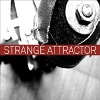 For their second Strange Attractor album, Niels van Hoorn and Richard van Krusdijk enlist an array of guest voices, including those of David J, Graham Lewis of Wire, Tuxedomoon's Winston Tong, and Peter Christopherson's Threshold Houseboys Choir. This venerable cast of characters makes music that lingers in the shadows, like something overheard spilling from an unmarked speakeasy in a darkened alley.
For their second Strange Attractor album, Niels van Hoorn and Richard van Krusdijk enlist an array of guest voices, including those of David J, Graham Lewis of Wire, Tuxedomoon's Winston Tong, and Peter Christopherson's Threshold Houseboys Choir. This venerable cast of characters makes music that lingers in the shadows, like something overheard spilling from an unmarked speakeasy in a darkened alley.
The mix of acoustic instruments and electronics makes for a relaxed late-night vibe, one that's not terribly involved but doesn't quite stray into light jazz territory either. The music doesn't say much on its own but instead serves best as support for the many guest vocalists, whose personalities give the tracks definition. Graham Lewis makes "The Best Things Are Left Unspoken" one of the album's highlights, while David J comes up with the best lyrics on "Sleaze," in which he bemoans the city's vanishing seediness. Winston Tong gives his track a literary bent with the reading of his own vivid translation of Baudelaire's L'Invitation au Voyage. Dotted between the other guests, the Strange Attractor's live mainstay Marie-Claudine gets four songs of her own which give the album a sense of continuity.
The pair of abstract contributions don't serve the album quite so well. Richard Sinclair's "Loneliness Is a Crowded Room" is hazy and meandering. Similarly paced and fittingly named, Peter Christopherson's "Snail" also stagnates the album a bit. Perhaps the album's most chilly and somber track, it's also somewhat of a disappointment. Christopherson adds the vocal stylings of Nat and Tye of the Threshold Houseboys Choir, but they're so muted and glacial and the accompanying music is so minimal that the track seems at odds with the rest of the album. Enjoyable on its own, it seems a little out of place here.
Otherwise the album mostly succeeds. Van Hoorn and Van Kruysdijk's great backdrops in combination with the various personalities of their guests makes for songs that exude after hours mystery and decadence.
samples:
Read More
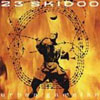 Re-master of the 1984 album, a more muscular production than Seven Songs and a pull back from the sonic tribal barrage of The Culling is Coming. Urban Gamelan comes with 12" singles “Coup” and “Language” (and their dub mix b-sides) as well as a beautiful and copious booklet.
Re-master of the 1984 album, a more muscular production than Seven Songs and a pull back from the sonic tribal barrage of The Culling is Coming. Urban Gamelan comes with 12" singles “Coup” and “Language” (and their dub mix b-sides) as well as a beautiful and copious booklet.
- Administrator
- Albums and Singles
 Re-master of the 1984 album, a more muscular production than Seven Songs and a pull back from the sonic tribal barrage of The Culling is Coming. Urban Gamelan comes with 12" singles “Coup” and “Language” (and their dub mix b-sides) as well as a beautiful and copious booklet.
Re-master of the 1984 album, a more muscular production than Seven Songs and a pull back from the sonic tribal barrage of The Culling is Coming. Urban Gamelan comes with 12" singles “Coup” and “Language” (and their dub mix b-sides) as well as a beautiful and copious booklet.
After 23 Skidoo's auspicious debut Seven Songs achieved unexpected independent success in the UK the group consciously pulled away from anything approaching its scratchy, industrial, ethno-funk. For a while they embarked on a path involving tape effects, cut-ups and a Gamelan style percussion derived from conventional instruments and scrap metal. The resulting 1983 album The Culling is Coming alienated and bemused listeners in equal measure. Later that year, though, Alex and Johnny Turnbull, (the nucleus of the group) decided to put some distance between themselves and other clanging noise-making combos of the period such as SPK and Test Department (who by then were employing jackhammers in their performances). To that end, Skidoo hired a bass player, Sketch Martin (from chart duo Linx) to enable them to edge a little closer to commercial music. Ironically, at the time Sketch was apparently looking to move away from commercial music but the merger was an oddly effective compromise. The initial result was the 12" single "Language" and more importantly the 12" "Coup" perhaps the most obvious contender for 23 Skidoo's one chance at an absolute chart smash.
Of course "Coup" was never released in 7" form which meant that daytime radio airplay was never going to happen. Live performances also didn't happen as the Turnbulls were busy concentrating on their martial arts training! To compound the shot in the foot, as was often the style at the time, Urban Gamelan did not feature either of the singles. Instead "Coup" appeared as the almost unrecognizable "GI Fuck You" and "Language" masqueraded as a meager percussion version. While the dub stylings of "Fire," the eerie march of "Jalan Jalan," and the clanging tick tock beats of the title track were radical at the time and still interesting, nothing on the album comes close to the slippery, alarming, brilliance of "Coup." What a track. Aswad's horn section was drafted in to howl after Sketch Martin's spanking bass led the listener boldly down a path while occasional machine gun bursts punctuated the air. The Chemical Brothers would replay that bassline for their inane hit "Block Rockin' Beats" and I trust 23 Skidoo got paid. Yeah, right.
For more on 23 Skidoo be sure to check Jonathan Dean's reviews of much of this material (as released on the Rodin label).
samples
Read More
- Administrator
- Albums and Singles
 Technically, Susanna and her accomplices have once again brilliantly reinvented a handful of internationally popular songs with a minimal amount of instruments, finely treated: piano and organ, guitar and pedal steel, and subtle drums all make way for her uncomfortably direct vocals, executed with perfect precision. Emotionally, however, this is perhaps one of the most painful releases of the year to listen to. Susanna sings with so much weight and conviction that I find myself nearly in tears, horrified during every second of these 14 songs (...and I love it).
Technically, Susanna and her accomplices have once again brilliantly reinvented a handful of internationally popular songs with a minimal amount of instruments, finely treated: piano and organ, guitar and pedal steel, and subtle drums all make way for her uncomfortably direct vocals, executed with perfect precision. Emotionally, however, this is perhaps one of the most painful releases of the year to listen to. Susanna sings with so much weight and conviction that I find myself nearly in tears, horrified during every second of these 14 songs (...and I love it).
Flower of Evil is ironically her take on popular and quite palatble pieces while Melody Mountain was her take on, as Rune Grammofon claims, "difficult" songs. The command on all of these songs is beyond astonishing. The instrumental ingredients are so simple yet the sound is vast enough to get completely lost, wrapped up in the emotions. With this album on, all divided focus on extraneous matters vanishes, everything else becomes trivial. It includes her version of "Jailbreak," adding to my argument of Thin Lizzy over AC/DC, Black Sabbath's "Changes," and Prince's underrated Lovesexy track "Dance On," each executed with a delicacy and tenderness none of those authors I'm certain ever remotely envisioned.
What I want to know is this: who hurt Susanna so much that has driven her to such depths? I'm quite familiar with the words to Abba's "Lay All Your Love On Me" but to have them sung with such honesty makes me pretty much unable to ever hear this song the same way again. Her heart-wrenching delivery of lines like "I feel a kind of fear when I don't have you near / Unsatisfied, I skip my pride, I beg you dear..." has hundreds of times more weight than the Swedes ever gave us (and undeniably destroys Erasure). Her version of "Without You" with Bonnie "Prince" Billy (one of two with him on the disc) needs to be substituted in future DVD releases of Rules of Attraction for the film's only saving grace: that bathtub suicide scene. And most achingly, the Tom Petty classic "Don't Come Around Here No More" has been transformed from what I considered a rather upbeat and snarky tune (we all remember the music video homage to Alice In Wonderland) to a caustic manifesto upon a boyfriend or husband who must have just beaten her, where I'm sure she has changed the locks and called the cops.
My warning goes out to parents of awkward, uncomfortable, over emotional (which is pretty much -all-) teenagers: don't worry about hip hop, hardcore, or death metal... worry about Susanna. She has proven here that she is far more dangerous with her simple but direct execution.
samples
Read More
- Administrator
- Albums and Singles
 This is the third live album from Will Oldham in as many years and out of the three, this one is the best. An excellent recording care of the BBC, Oldham and his backing band for the small tour are on fire. The original radio broadcast made its way to the Internet a while ago but like most downloads on my hard drive it remains unlistened to. I am sorry I did not listen to it as this CD has proven to be astounding in its beauty and perfection.
This is the third live album from Will Oldham in as many years and out of the three, this one is the best. An excellent recording care of the BBC, Oldham and his backing band for the small tour are on fire. The original radio broadcast made its way to the Internet a while ago but like most downloads on my hard drive it remains unlistened to. I am sorry I did not listen to it as this CD has proven to be astounding in its beauty and perfection.
I saw this line up of the Bonnie ‘Prince’ Billy band at a different concert on the same tour and listening back to them now, I still stand by my review of that night that the group’s performance of these songs old and (at the time) new surpassed the performances found on Oldham’s recorded output. Classics like “New Partner” and “Master and Everyone” are given perhaps their best renditions yet. Two less familiar songs, both covers, stand proud amidst Oldham’s originals. “Molly Bawn” is a haunting traditional song about a man mistakenly killing his wife to be and it is one of the finest songs that Oldham has lent his voice to. The other cover is by Harem Scarem themselves; “Is it the Sea?” is an achingly sad song in Oldham’s hands (although the version of it on Oldham’s other live album Wilding in the West does not do the song justice at all). Ruminations of an old fisherman on his life spent on the ocean (“Is it the hell I fear, is it the sea?”) segue into the familiar strains of “My Home is the Sea” which sounds like it was born to be played after “Is it the Sea?”
Some of the songs performed during this performance that would later emerge on The Letting Go are remarkably close to the studio versions despite the completely different line ups and instrumentation. It is likely that the songs were well finished being written by the time Oldham embarked on this tour (and from the timing, I imagine that the bulk of The Letting Go had been recorded in some form or other at this point) but still it is surprising that there is not more variation between the two presentations of these songs. I must admit that “Cursed Sleep” does sound a little empty without Dawn McCarthy’s distinctive vocals intoning the melody but aside from that, I would be hard pushed to choose between these versions or the studio ones as favourites. In any case, the versions here are certainly leagues ahead of the hardcore fan-only demo CD Wai Notes.
A couple of things that are missing from the recordings are the short bit that Oldham performed solo at the start and the encores. It is a pity that the whole thing was not included, although I am guessing this is a direct copy of a BBC broadcast. However, this album is still worth every single penny as it shows one of the greatest songwriters of the last century in top form.
samples:
Read More
- Administrator
- Albums and Singles
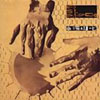 23 Skidoo's debut has been given another chance with this much deserved reissue. Their sinister ethno-funk industrial-dub blueprint remains an essential listen and their suspicion of commercial success seems both quaint and prophetic.
23 Skidoo's debut has been given another chance with this much deserved reissue. Their sinister ethno-funk industrial-dub blueprint remains an essential listen and their suspicion of commercial success seems both quaint and prophetic.
In the UK of the early 1980s there was an independent music chart published in the weekly music papers. The chart was important because it gave credence to labels and artists operating outside the mainstream and highlighted the importance of alternate views of the cultural world. When Seven Songs topped the chart the phrase 23 Skidoo cross-pollinated from literature, conspiracy theory and US slang. Simultaneously, a cult group for the ages was inscribed in the margins of popular music mythology, in pencil, obviously.
At the heart of 23 Skidoo are the Turnbull brothers. Since 1979 they have wed ancient Eastern and African interests to a restlessly modern tribal angst. The group have taken the opportunity to confound expectations whenever possible and have created an uncompromising and seminal musical identity: check the extent of their imitators. In the process, 23 Skidoo have illustrated how to retain relevance and integrity when threatened by hazardously close brushes with success in the music biz. Never a dance band their music has always resembled the neo-primitive urgings of a gang of aesthetics wandering a post-apocalyptic urban desert.
Once again, LTM's fabulous liner notes would be worth the price of this set even if the discs were blank. It's all here: the Jeet Kune Do philosophy, the rejection of major label advances, the identity destroying rip-it-up-and-start-again WOMAD appearance (of a quarter of a century ago), and more. However, on this occasion, with this music, I am not prepared to cherry pick tales for your titillation. Fuck the recession, go to the LTM website , stick your hand in your pocket and cough up some cash. The accompanying booklet details a history of spontaneity, confrontation and exploration that places 23 Skidoo accurately in the tangled milieu and family tree of pre and post-punk creativity amidst Can, Joy Division, ACR, Throbbing Gristle and others. The text is littered with references and quotes from journalists and musicians of the time (and from the Turnbulls themselves) which provide the perfect backdrop to this music—if any were needed. Another must read, elsewhere on the brainwashed site, are Jonathan Dean's comprehensive reviews of all the Ronin reissues from earlier this decade.
Seven Songs was produced by Genesis P-Orridge, Peter Christopherson, and Ken Thomas (who would later assist the Sugarcubes and Sigur Rós). This release also comes with two tracks released in 1981: the 7" single "Last Words" and (the ten minute opening staple of the band's live shows at the time) 12" EP The Gospel Comes To New Guinea, both originally on the Fetish label. In addition it also includes the four tracks of the 1982 12" EP Tearing Up The Plans.
samples:
Read More
- Administrator
- Albums and Singles
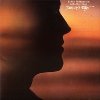 After the dissolution of the Incredible String Band in 1975, co-founder Robin Williamson relocated in Los Angeles and began writing songs for what would become his second solo album after 1972's Myrrh. Recruiting members for his Merry Band, Williamson returned to Celtic and British traditions to create songs of mood-based storytelling. In addition to the album proper, this reissue includes ten previously unreleased demos cut with Stan Schneir of latter-day ISB that are every bit as good as the album itself.
After the dissolution of the Incredible String Band in 1975, co-founder Robin Williamson relocated in Los Angeles and began writing songs for what would become his second solo album after 1972's Myrrh. Recruiting members for his Merry Band, Williamson returned to Celtic and British traditions to create songs of mood-based storytelling. In addition to the album proper, this reissue includes ten previously unreleased demos cut with Stan Schneir of latter-day ISB that are every bit as good as the album itself.
Given the context, it's not surprising that the first few songs deal with travel and looking backwards. He sings of world travel while a girl waits for him in California on "Border Tango," while he rides into a new town with only "a bloody rose in my lapel/whiskey in the jar" on "The Tune I Hear So Well." "Red Eye Blues" has him pining for someone he left behind, but on "Tomorrow," he's finally focused on the future and is convinced he's living in "Mythic Times." Although many of the songs are lighthearted, it's Williamson's emotional sincerity that gives them weight. The only track in which he gets a bit too silly is the cover of Lewis Harris and John Jacob Loeb's "The Maharajah of Mogador." Although it's amusing, the humor wears off after a few listens.
Williamson's Merry Band is a big key to this album's success. The exceptional musicianship of Chris Caswell, Jerry McMillan, and Sylvia Woods is evident on every track. Woods' harp playing in particular is elegant and enchanting, complementing this material perfectly. Yet it's Williamson's voice that remains the biggest draw. His nuanced manner of drawing out ordinary syllables or suddenly infusing them with emotion lends the songs an easy charm. This is also the case with the demo recordings included on this disc, ensuring that there's essentially little or no drop in quality.
Williamson's mix of tradition and contemporaneity gives these songs a surprisingly timeless nature. Journey's Edge is a remarkable album, one that's far more joyful and rewarding than its lackluster cover may suggest.
samples:
Read More
- Administrator
- Albums and Singles
 Eyeless in Gaza's latest release is a two-album set bundled in a colorful and lavish hinged box. The discs each come in an oversized, book-bound jacket and, along with a thick lyric booklet, make for an impressive package. It's a shame, then, that the music isn't nearly so stunning as the presentation.
Eyeless in Gaza's latest release is a two-album set bundled in a colorful and lavish hinged box. The discs each come in an oversized, book-bound jacket and, along with a thick lyric booklet, make for an impressive package. It's a shame, then, that the music isn't nearly so stunning as the presentation.
Although they were completed a year apart, these two albums mine remarkably similar territory. The sparkling production values are noticeable, but the result is that all of the rough edges have been polished away, leaving a somewhat uniform sheen to even the most disparate tracks. Not helping matters are small things like field recordings that are too glossy to lend any real texture or canned drums and dated keyboard sounds that appear throughout these songs. Sometimes Martyn Bates' over-earnest singing borders on melodrama, and his upfront delivery doesn't change much from song to song. In smaller doses it's fine, but over the course of two albums, some sort of significant variation would have been nice.
Yet the real problem is that these albums lack any real urgency or excitement. Despite the strong, multifaceted arrangements and attention to detail in the mix, these songs take the safe road far too frequently and don't take enough chances. With too much of an emphasis on delicate atmospheres, yearning vocals, and strained beauty, noticeable tempo changes or even a tiny bit of genuine abrasion would go a long way toward making these albums more dynamic and fulfilling. The sameness in mood and execution simply wears thin.
Even so, there still are some enjoyable moments to be found on these recordings. From Summer Salt, "Whitening Rays" combines many of Gaza's best qualities and fuels anticipation for what follows, while "Antipathy Whisper" is probably this album's most upbeat and fully realized song. Despite their similarity, Subway Sun has slightly better tracks, yet isn't without its drawbacks. "Antiphony in Whispers" begins with great textures, but the excessive delay and reverb on the drums makes it sound like an experiment from twenty years ago. But "Zeal" possesses real purpose and exuberance, followed by the instrumental "One-Legged," which uses tapes and manipulated guitar to create the most engaging track of either album.
These albums are by no means terrible, just a bit too polite and boring. The lush yet undifferentiated production unfortunately makes the songs somewhat bland and forgettable, leaving me wishing for something with a little more bite.
samples:
Read More